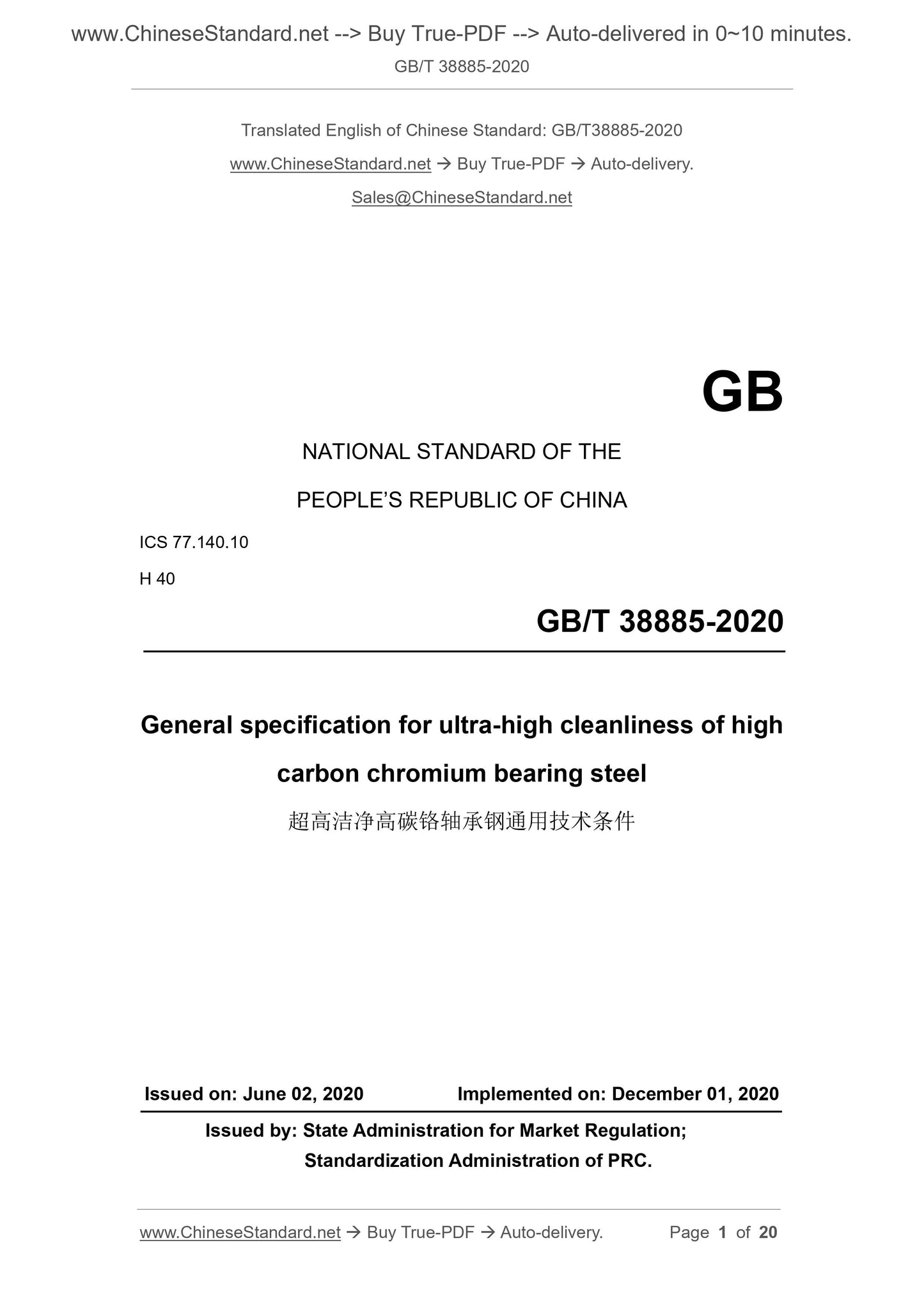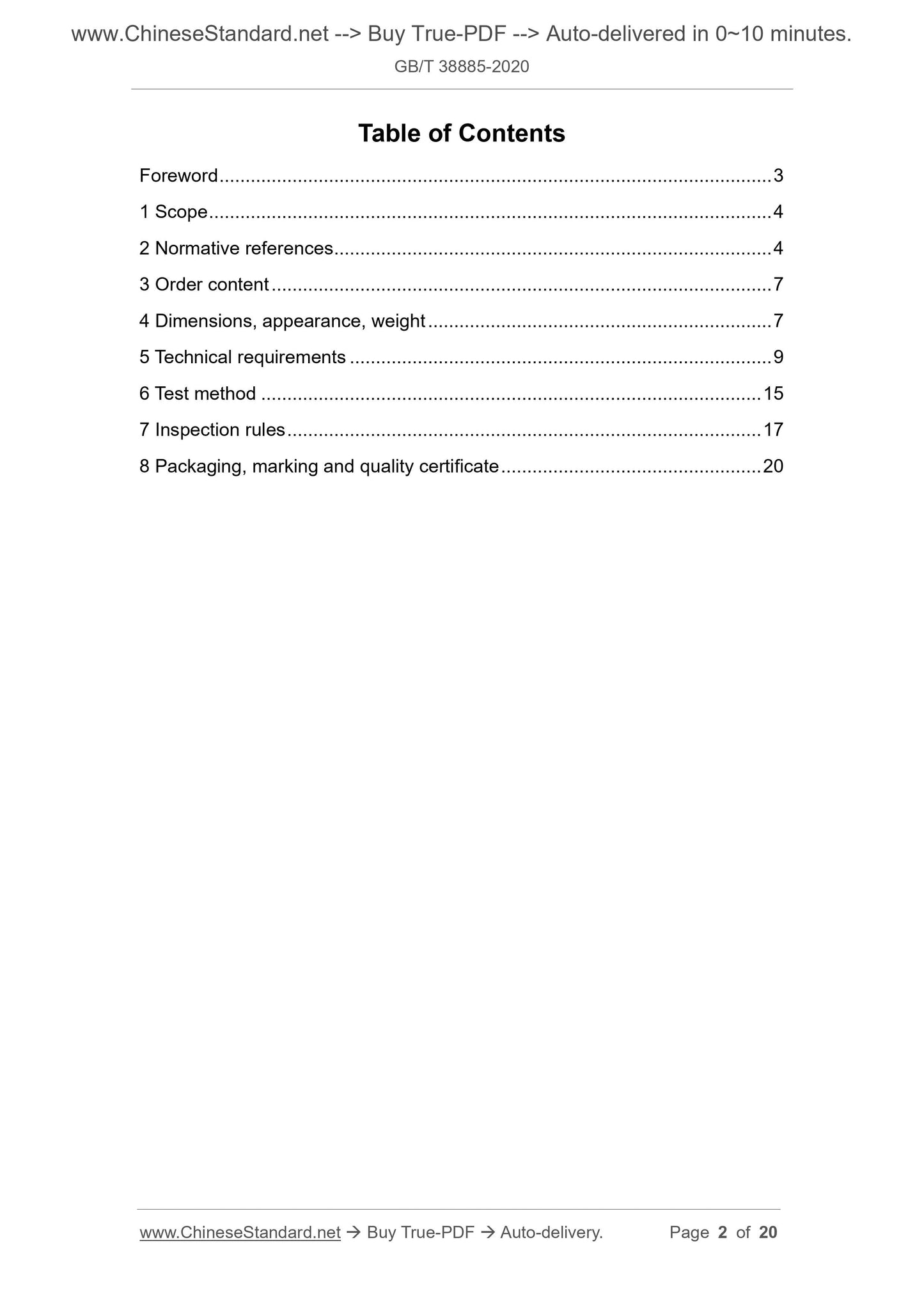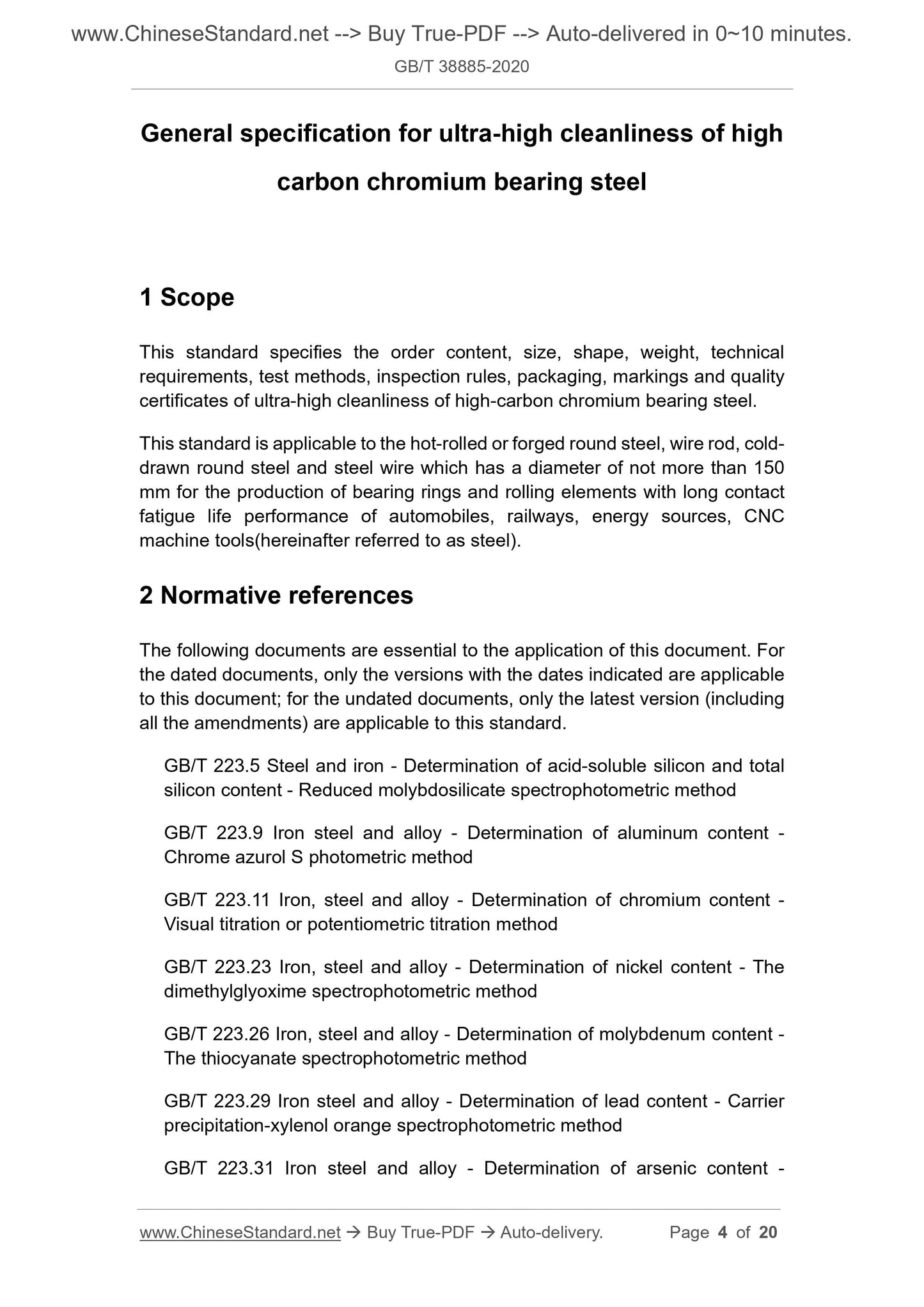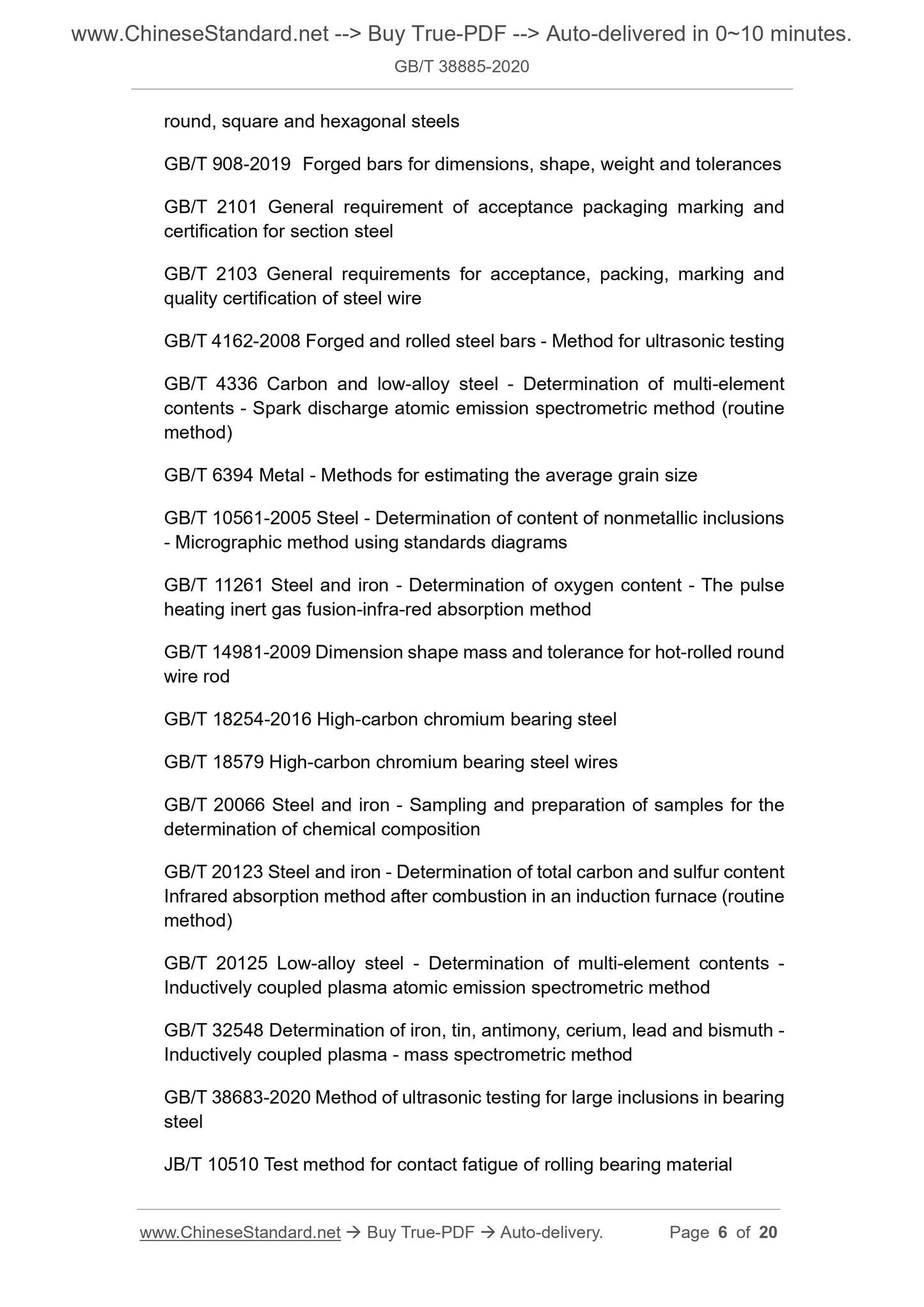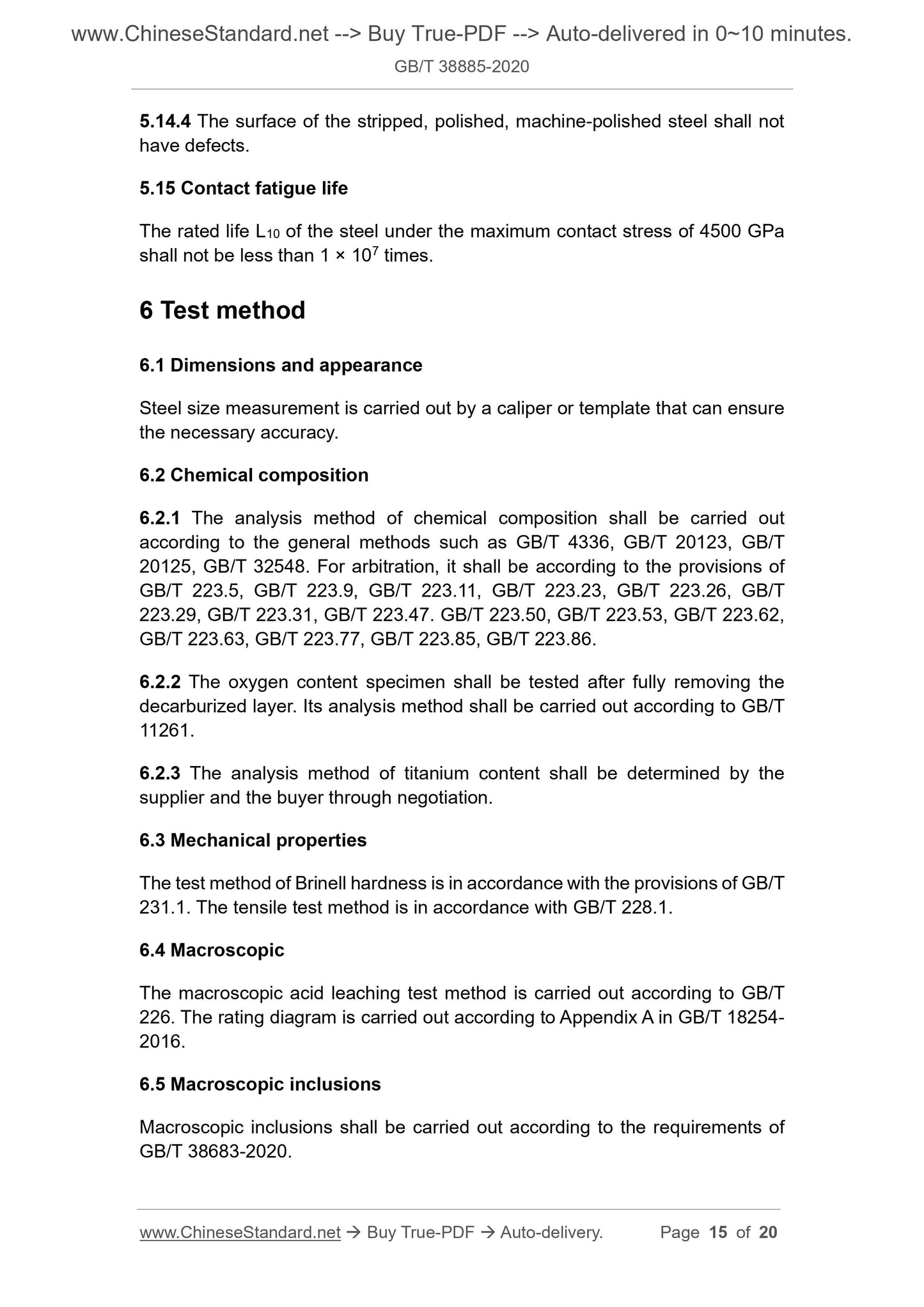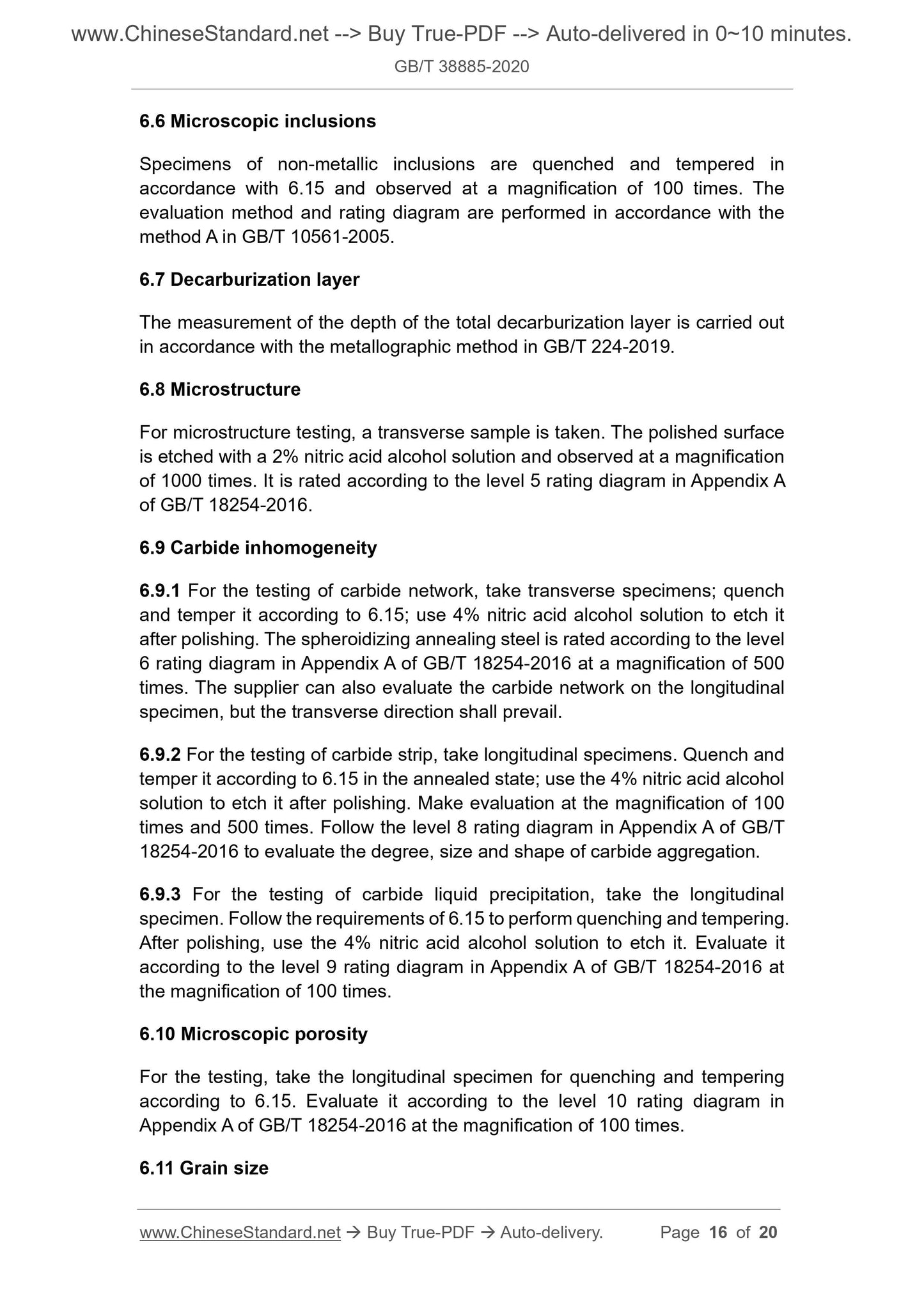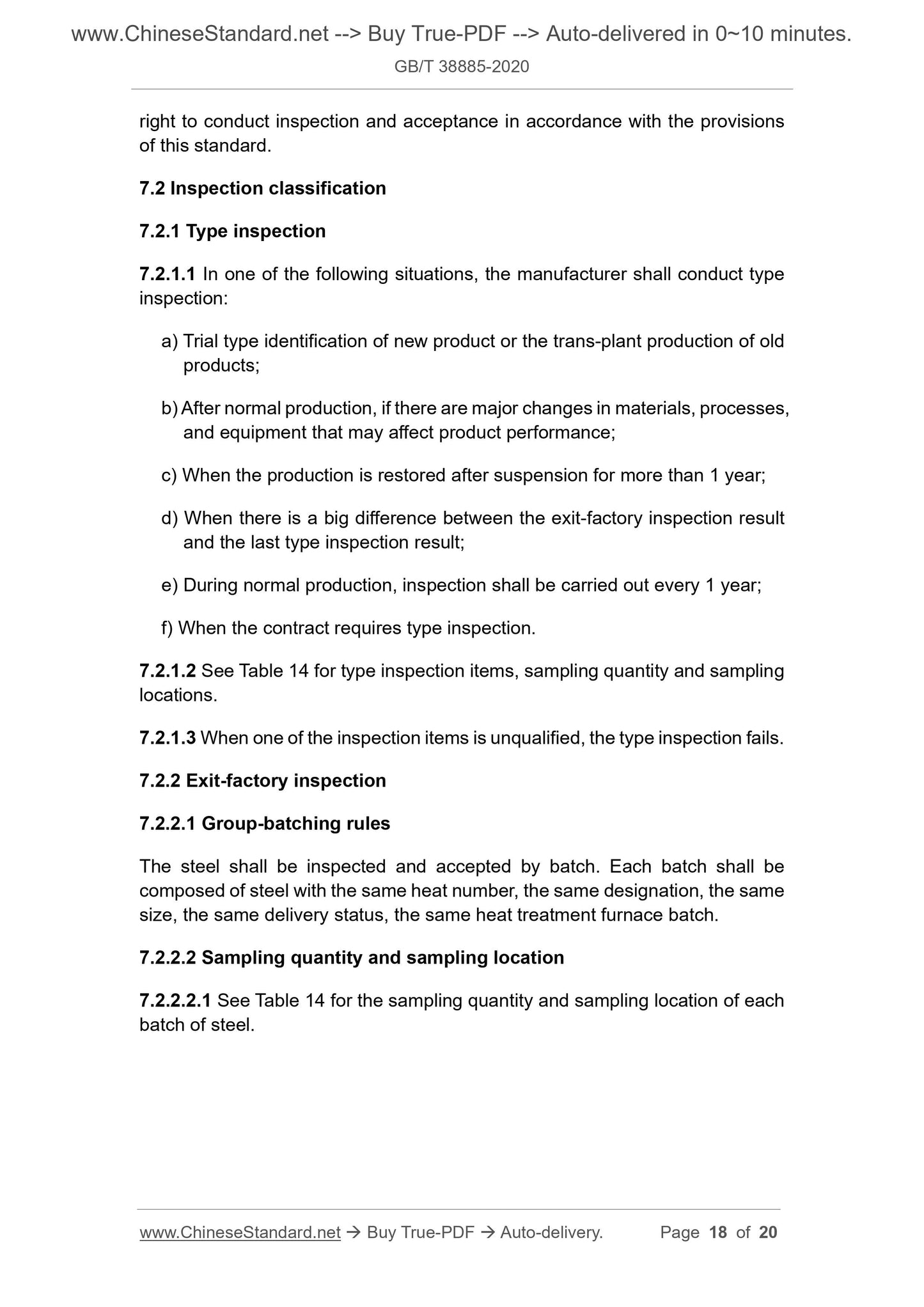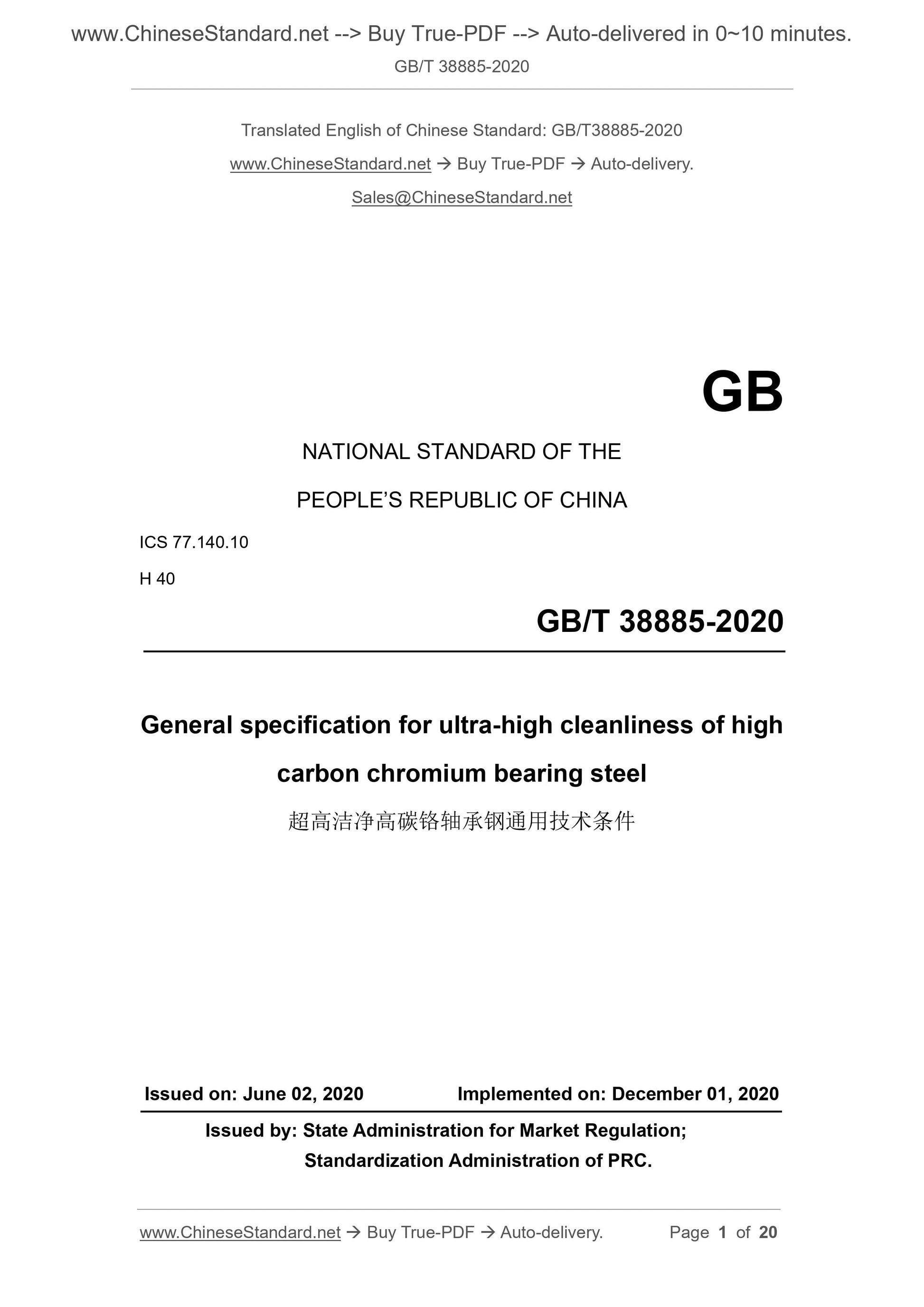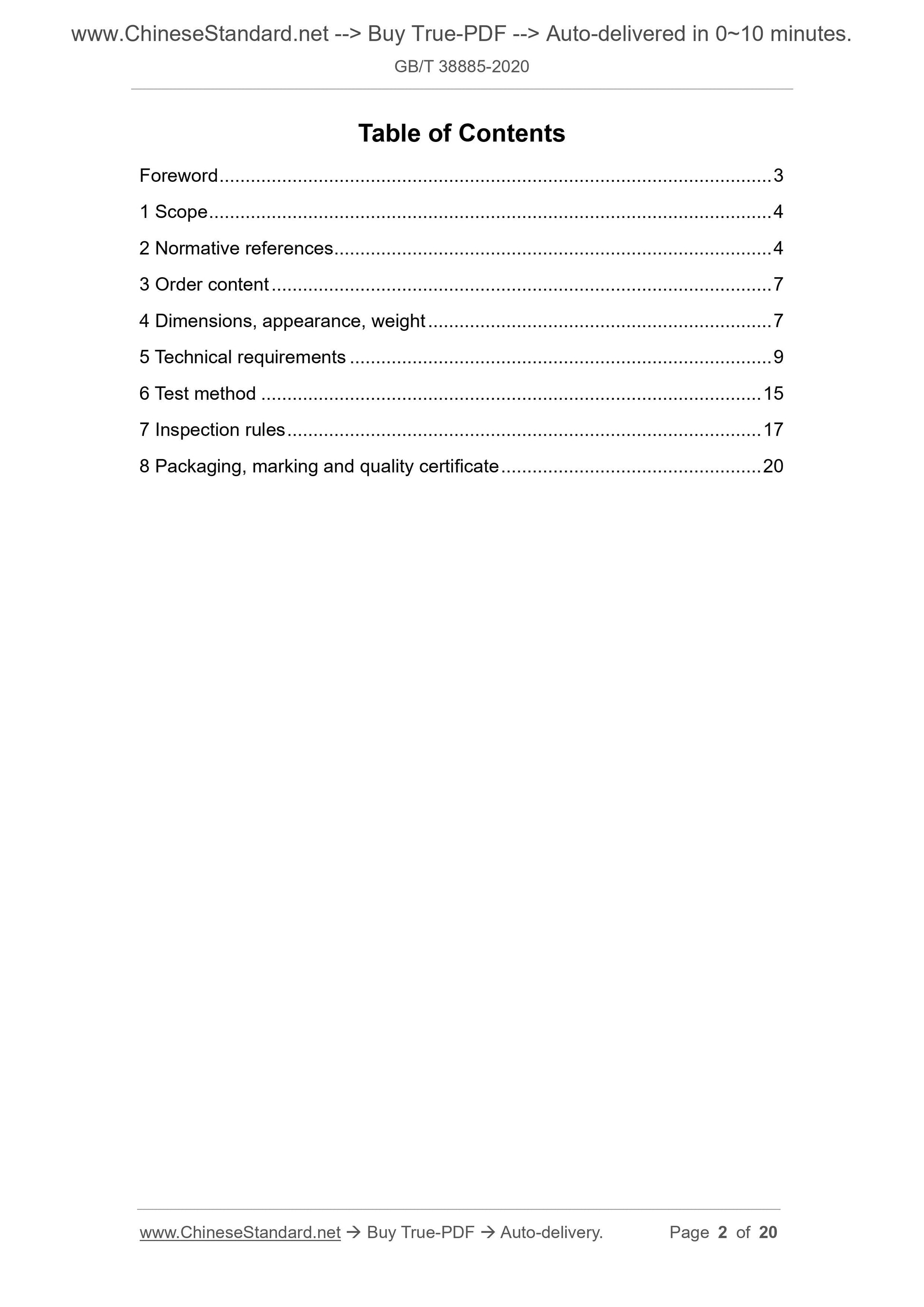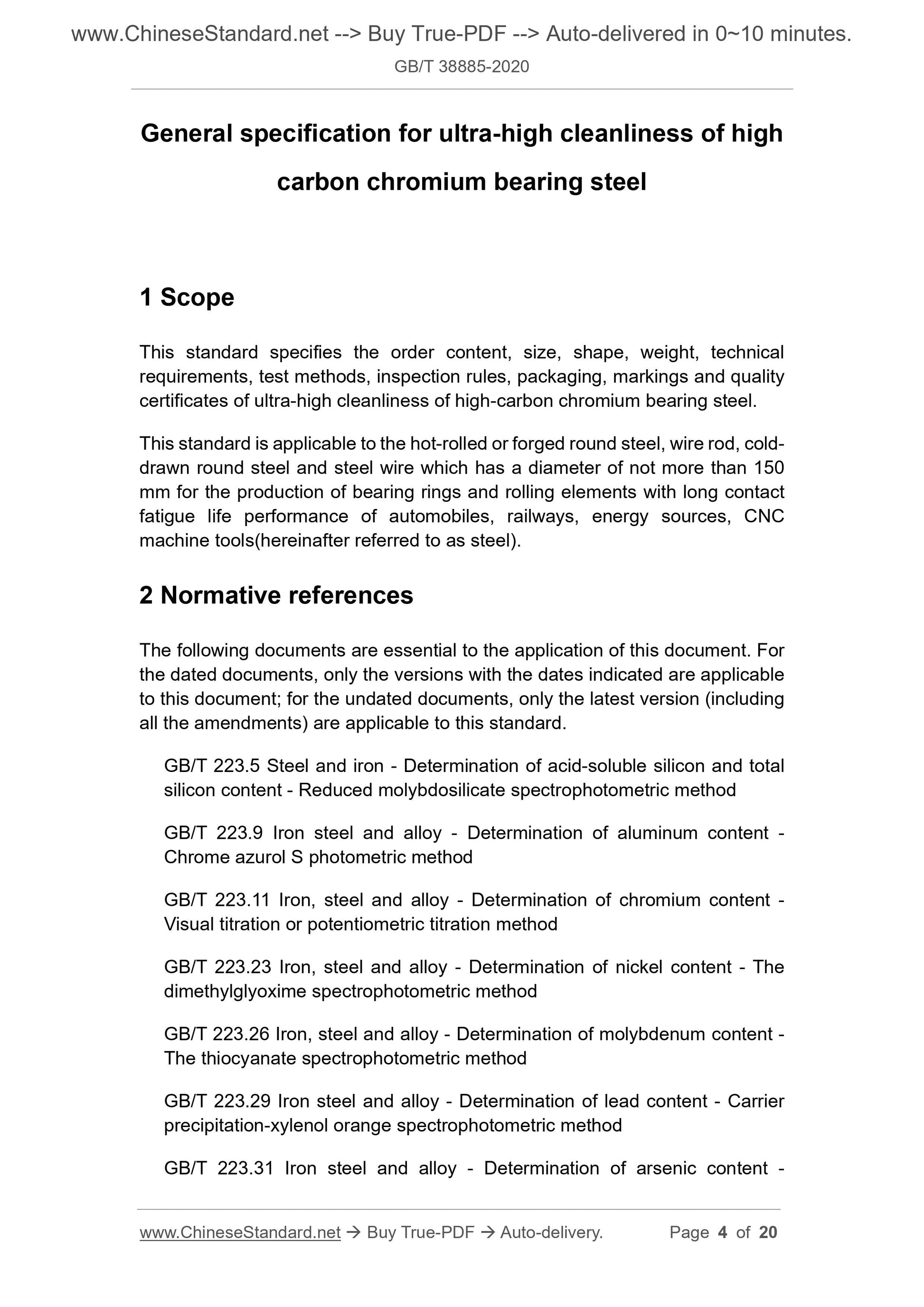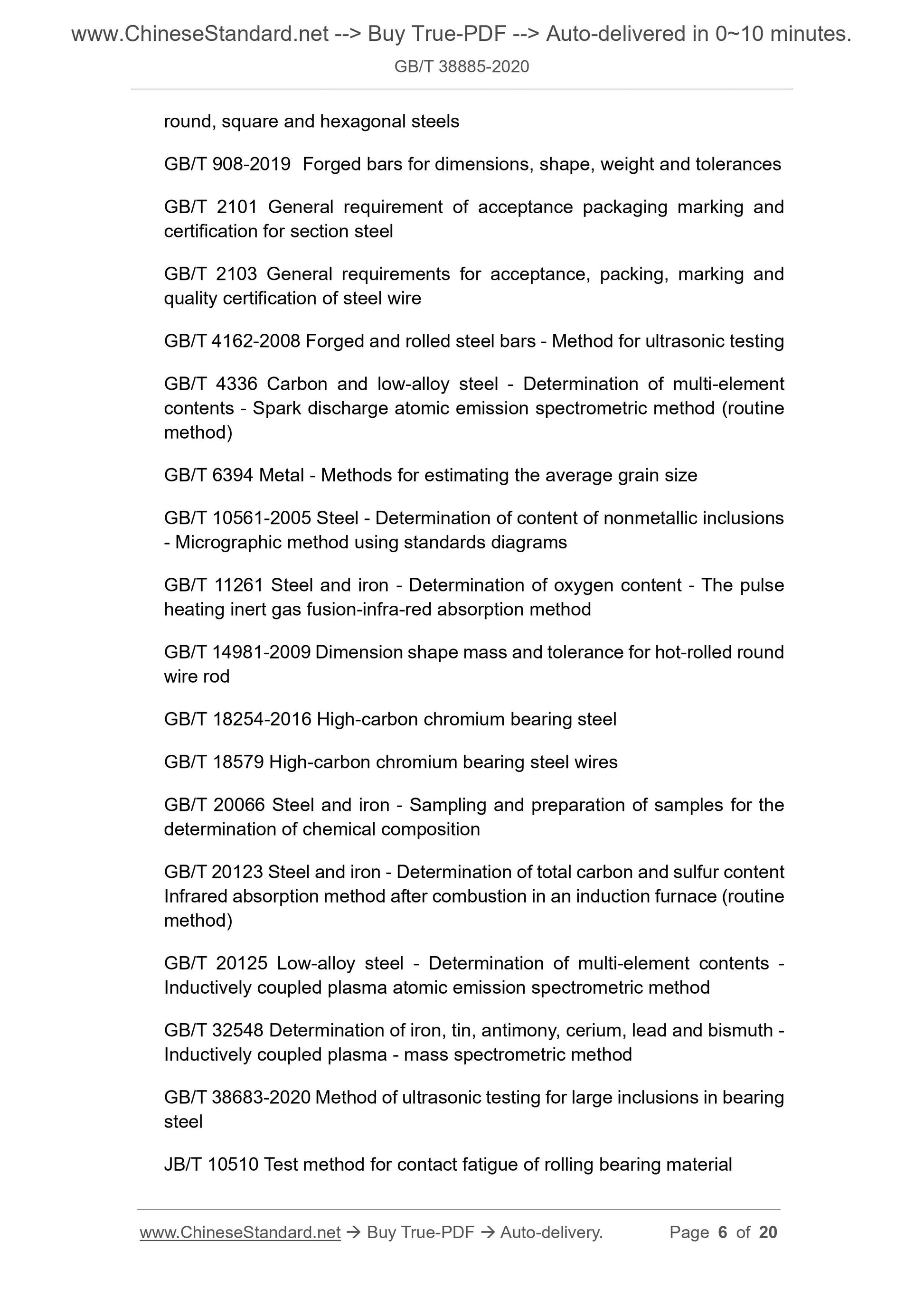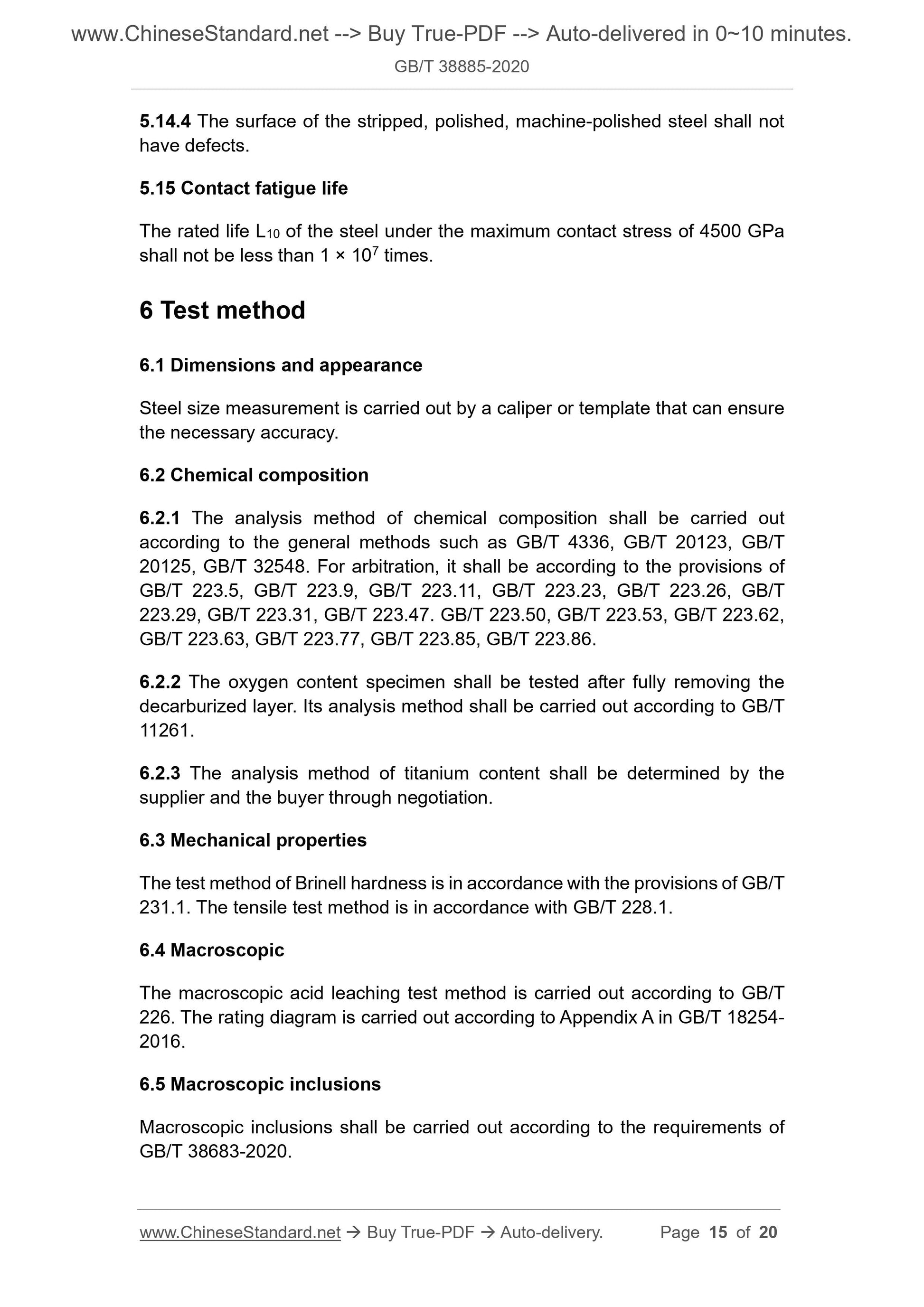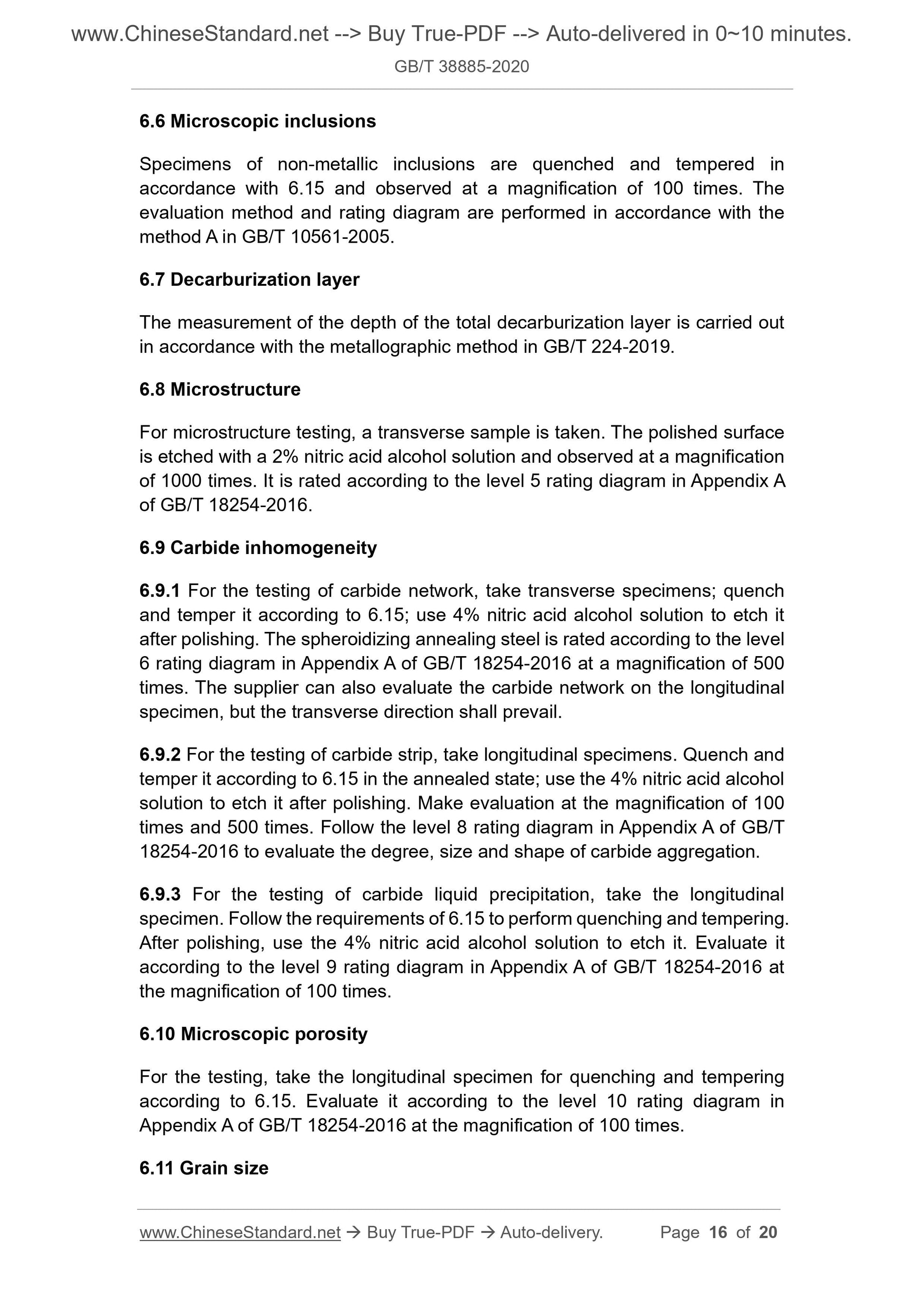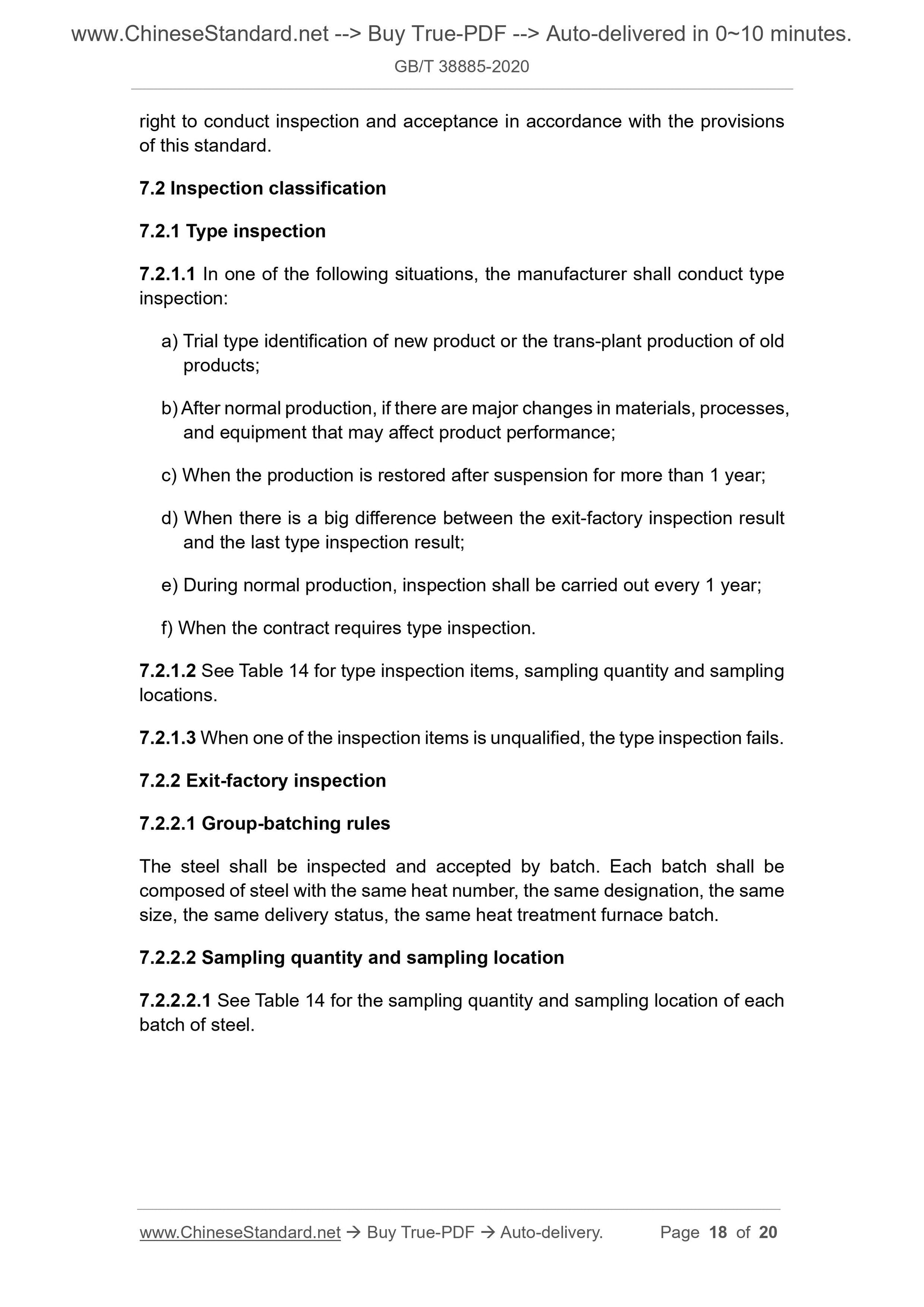1
/
of
7
www.ChineseStandard.us -- Field Test Asia Pte. Ltd.
GB/T 38885-2020 English PDF (GB/T38885-2020)
GB/T 38885-2020 English PDF (GB/T38885-2020)
Regular price
$185.00
Regular price
Sale price
$185.00
Unit price
/
per
Shipping calculated at checkout.
Couldn't load pickup availability
GB/T 38885-2020: General specification for ultra-high cleanliness of high carbon chromium bearing steel
Delivery: 9 seconds. Download (and Email) true-PDF + Invoice.Get Quotation: Click GB/T 38885-2020 (Self-service in 1-minute)
Newer / historical versions: GB/T 38885-2020
Preview True-PDF
Scope
This standard specifies the order content, size, shape, weight, technicalrequirements, test methods, inspection rules, packaging, markings and quality
certificates of ultra-high cleanliness of high-carbon chromium bearing steel.
This standard is applicable to the hot-rolled or forged round steel, wire rod, cold-
drawn round steel and steel wire which has a diameter of not more than 150
mm for the production of bearing rings and rolling elements with long contact
fatigue life performance of automobiles, railways, energy sources, CNC
machine tools(hereinafter referred to as steel).
Basic Data
| Standard ID | GB/T 38885-2020 (GB/T38885-2020) |
| Description (Translated English) | General specification for ultra-high cleanliness of high carbon chromium bearing steel |
| Sector / Industry | National Standard (Recommended) |
| Classification of Chinese Standard | H40 |
| Classification of International Standard | 77.140.10 |
| Word Count Estimation | 14,163 |
| Date of Issue | 2020-06-02 |
| Date of Implementation | 2020-12-01 |
| Issuing agency(ies) | State Administration for Market Regulation, China National Standardization Administration |
Share
